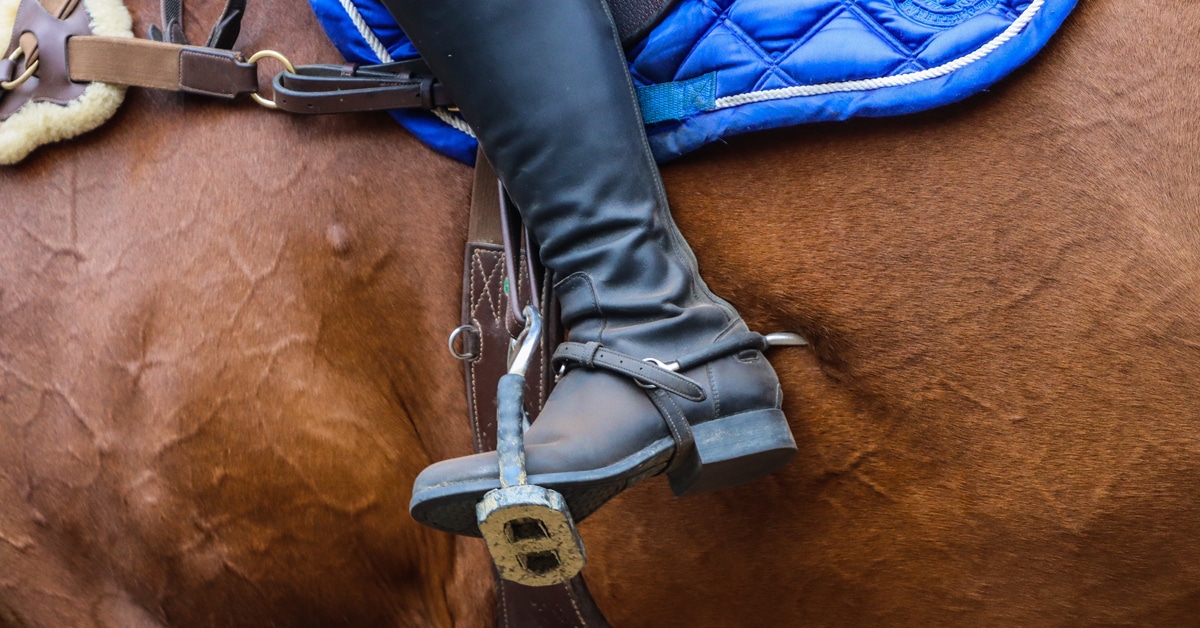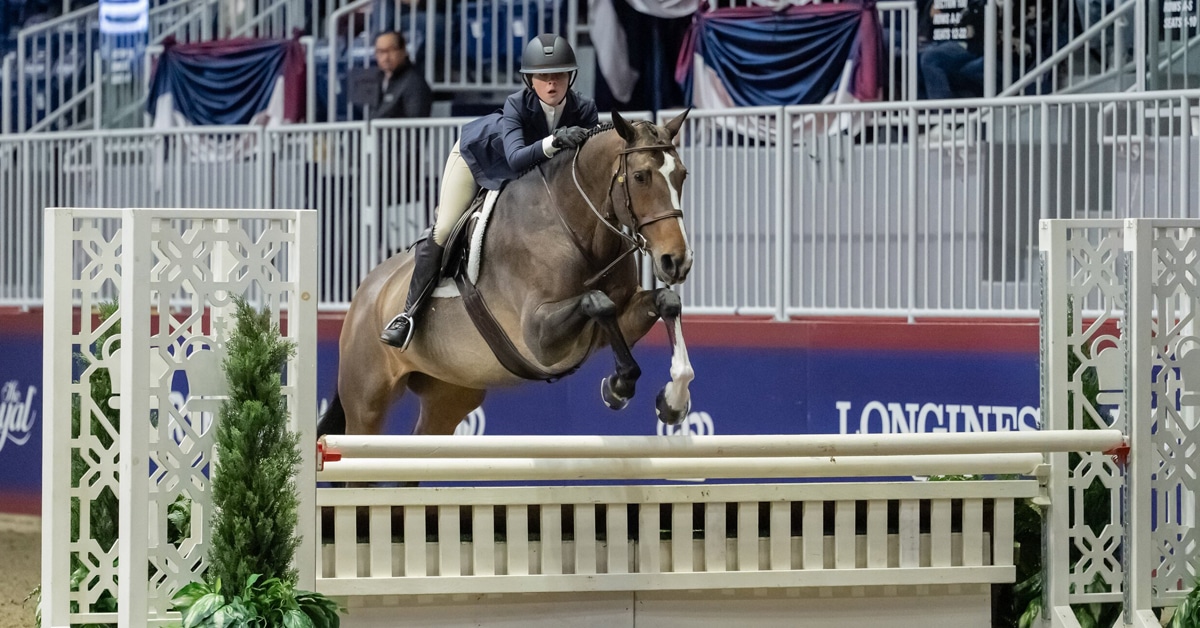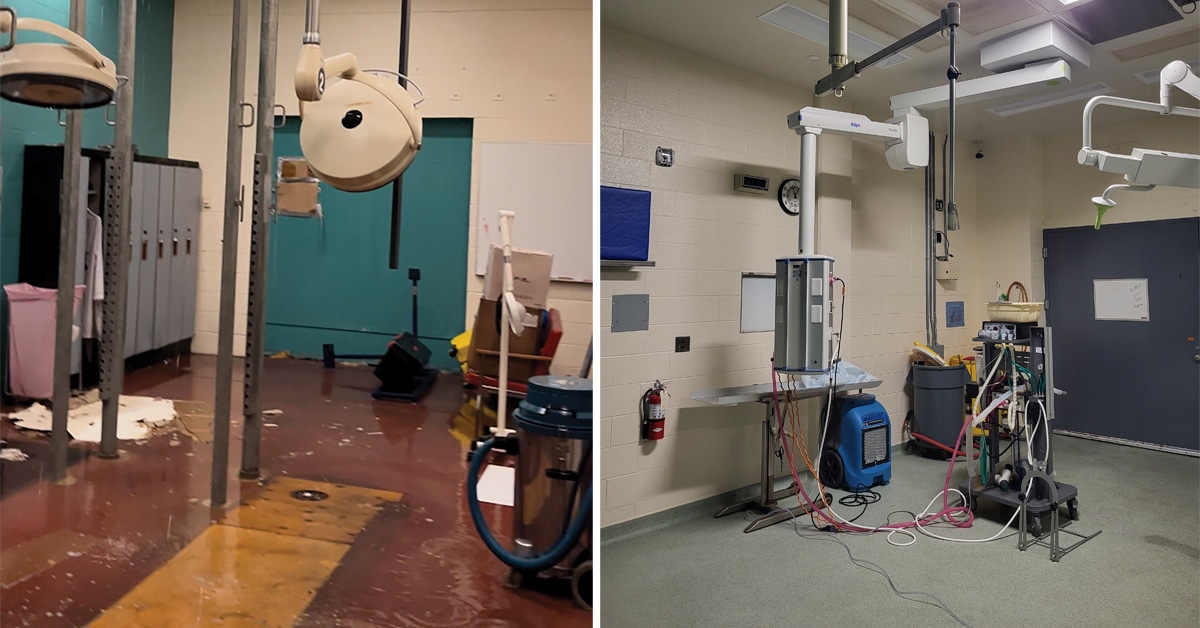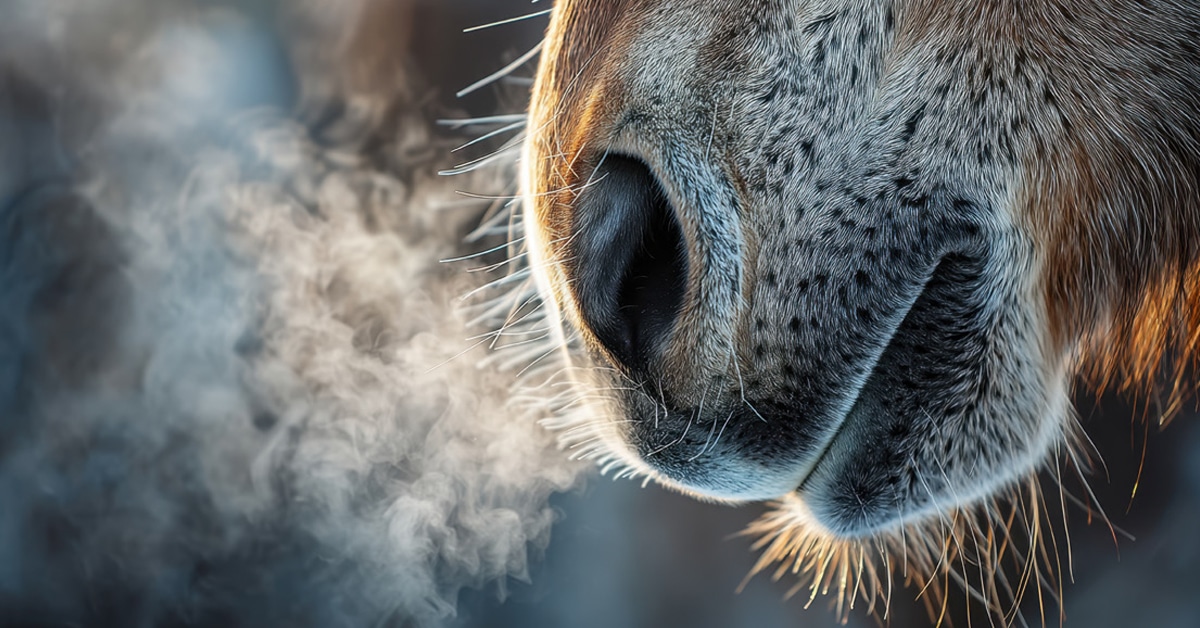Whether you are faced with a long run to a single vertical or a single oxer, “everything is connected” says top rider and coach Erynn Ballard. “I think when you have more room and more time to get to a jump, it’s much easier to make a bigger mistake. People identify ‘finding a distance’ as their biggest issue, but in order to find a distance, several factors have to come into play. The components of a good approach to a single fence are practiced and perfected individually.”
Eye control
A teaching tool I use a lot is what I call a ‘magic distance finder.’ I was always trained that you look at the centre of the front pole to find a distance, and that remains the basis of my system. I use whatever is in the ring – a jump cup, flower, or my riding glove – and I rest it on the centre of the top pole. When we consider a rider’s depth perception in relation to the ideal take-off spot, it’s not the back pole that shows the distance, it’s not the ground, and it’s not the horizon; it’s the centre of the front pole that you need to be able to read in order to judge the correct distance.
Track
You have three options for a track on the way to a fence: inside, straight, and outside. If you come out of the corner on the inside track, you’re leaving yourself with one less stride to the jump. It is the same principle as in a jump-off, when you deliberately cut in to leave out strides and save time on a turn. An outside track is wide out of the corner and will have created more space. In many cases, the straightness of the track on the approach to the jump will effect the straightness of the horse’s body on the takeoff to the jump, which in turn affects the overall quality of the jump. If you come out of the corner straight, the horse will be square to the fence and you will have presented the best option for a correct distance.
Stride control
It’s very easy to lose control of the stride on a long approach to a fence because you don’t have an ‘in’ jump to slow you down off the turn. I think a majority of mistakes happen when you lose control. If the horse’s stride gets long and away from you, the distance becomes difficult to find because the canter has changed. We frequently use poles at home to familiarize riders with the correct stride length and to develop stride control. I will set a line of poles five or six strides apart on a 12’ stride length and use repetition to help the riders identify the correct stride length.
When I was a junior, I was under the impression that you wanted your single oxer to be spectacular, that it was somewhere you could show a change of pace and boldness, but in actuality to have a perfect hunter round you want every jump to be the same. I would say that 99% of times hunter riders jump their first jump too slow and their last jump (usually a single oxer) too fast. If it is a handy or a derby, you can show some brilliance, but typically you want to remain on the same rhythm and stride for the entire course.
The swap
The single oxer on a diagonal is a very easy place for a horse to swap leads on takeoff. Most hunters know that on a left lead diagonal they are going to turn right after they jump. If we have one that swaps, on landing we will turn to the outside so that they stop anticipating the turn to the inside. A single oxer on the outside track is sometimes used in a course, and that opens up an opportunity for a missed lead change, because a lot of times they will grab the outside lead upon landing. You really need to have the correct balance and stride control upon landing to get a lead change on a straight line, which is harder than on the diagonal.
The Latest









